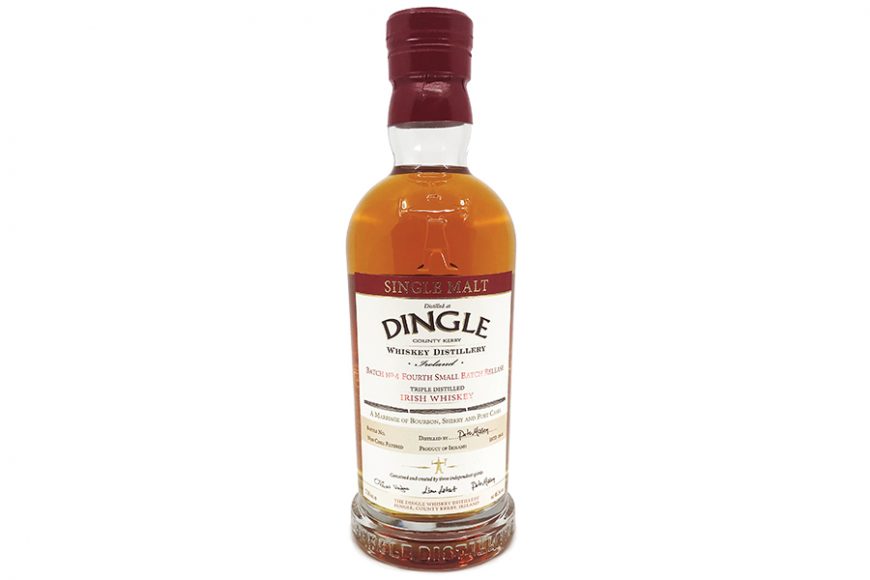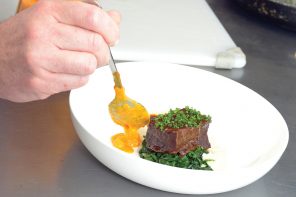As some of you may know, I wrote a “Wine Tasting Journal,” published last year by Peter Pauper Press. I have several friends who are more spirits-centric than wine and a few suggested I write a “Spirits Tasting Journal.” I ran the idea by my editor who then ran the idea by the publisher. He suggested I write a formal proposal for the project. I did and it was accepted, the contract was signed and I began the project. The manuscript was submitted and enthusiastically accepted and it will be available sometime in early 2020. I casually interviewed many bartenders about trends in the industry and at their bars. From Manhattan to Cape Cod to Vermont the answer about trends was the same. “No one orders cosmos anymore. That went away when ‘Sex and the City’ went off the air. We are now seeing patrons ordering up the brown spirits, men and women alike.”
There are several brown classifications. All spirits, post-distillation are clear. The brown color and subsequent flavors come from wood aging of the spirit. There are clear rums and tequilas but when wood barrel aging becomes part of the process, the color changes, the flavors and texture take on a myriad of tasting and mouthfeel profiles and, of course, the price will increase. Barrels are expensive and wood aging takes time. But all the whiskeys of the world are by definition, barrel aged. So today I would like to focus on whiskey as a worldwide expression of brown spirits.
There are many types and styles of whiskey. The different whiskey-producing areas of the world felt the need to codify their production standards by enacting laws that assisted in seeing to it that their regional expression was guaranteed to meet certain standards. Scotland and Ireland were the originators of this beloved and stimulating quaff that can cement friendships or trigger fights. Both countries use barley as the dominant grain. Single malt whiskies can only be made from barley but other grains are allowed for blended whiskey. And both Scotland and Ireland require a minimum barrel aging time of three years, but some producers age for many more years or decades.
Bourbon and Tennessee whiskey must be produced using at least 51% corn as the base fermenter. Some producers use a much higher percentage of corn but they can employ other grains. Both whiskeys must be aged a minimum of three years in new oak barrels. This imparts a sweetness of vanilla and perhaps honey, and a spiciness of pepper and licorice, depending on the degree of fire the wood was exposed to during barrel manufacture. Tennessee whiskey can only come from Tennessee while Bourbon can be made anywhere in the United States but must follow the 51% minimum corn and the new oak barrel rule.
Canadian whiskey rules are simple. The grain source can be wheat, corn, barley or rye. They must be barrel aged for a minimum of three years and they must be made in Canada. Japan, Australia, New Zealand and India are relatively new to the world of whiskey production but they are all making some wonderful whiskeys.
Find a large liquor store where you might be able to find a large assortment of smaller bottles to sample some whiskies. Whiskey can be mixed with any number of ingredients to make a popular cocktail like the Manhattan or the Old Fashioned but let’s go pure here. I attended a Macallan “whisky” seminar (Scotland dropped the “e” in the word) several years ago, and the Macallan head distiller told us the proper drinking process. Pour some whisky in a glass and add a couple of ice cubes or a small bit of water. This, he said, would release the essence of the whisky and let it open up and properly express itself.
The whiskies of Scotland can be all over the map in flavor profile. The lowland producers of Scotland tend to make pure and lighter whiskies while the northern highland producers often add different degrees of smokiness from using smoldering peat moss in the process. This can add a touch or an avalanche of smokiness in the whisky. Some of the heavily peated whiskies require some time and multiple tastes over the years to adjust to the flavors. The Irish whiskeys (note the different spelling and plural) tend not to use peat, so these whiskeys tend to lean toward the sweeter and fruitier. And typically both countries will bottle their liquor at 80 proof, or 40 % alcohol by volume.
Bourbon and Tennessee whiskeys are naturally going to have a sweeter flavor, because of the corn base and because of the requirement of only using new oak barrels. The individual producers decide on their distillery’s desired flavor profile. The amount of oak aging time is critical as more time will impart more of the oak flavors. Equally important is the heat or fire that the wood was exposed to during barrel construction. More fire will emit a spicier and bolder flavor. Less toast will offer up lighter and fruitier whiskey. Both Bourbon and Tennessee whiskey can be bottled at much higher proofs. I always want to know the alcohol percentage of these whiskeys. Two or three drinks of 100 proof (50% alcohol by volume) will be 25% stronger than the same number of drinks at 80 proof. Self-monitoring is always key to a good time.
So there you have it. Whiskey is a wonderful drink much in fashion at the moment. If it tastes too alcohol-heat strong, add more cubes or water to bring it to your comfort level. Everyone has a house style they prefer. Explore different countries, explore different producers. Becoming whiskey-literate will open doors. You’ll see.





